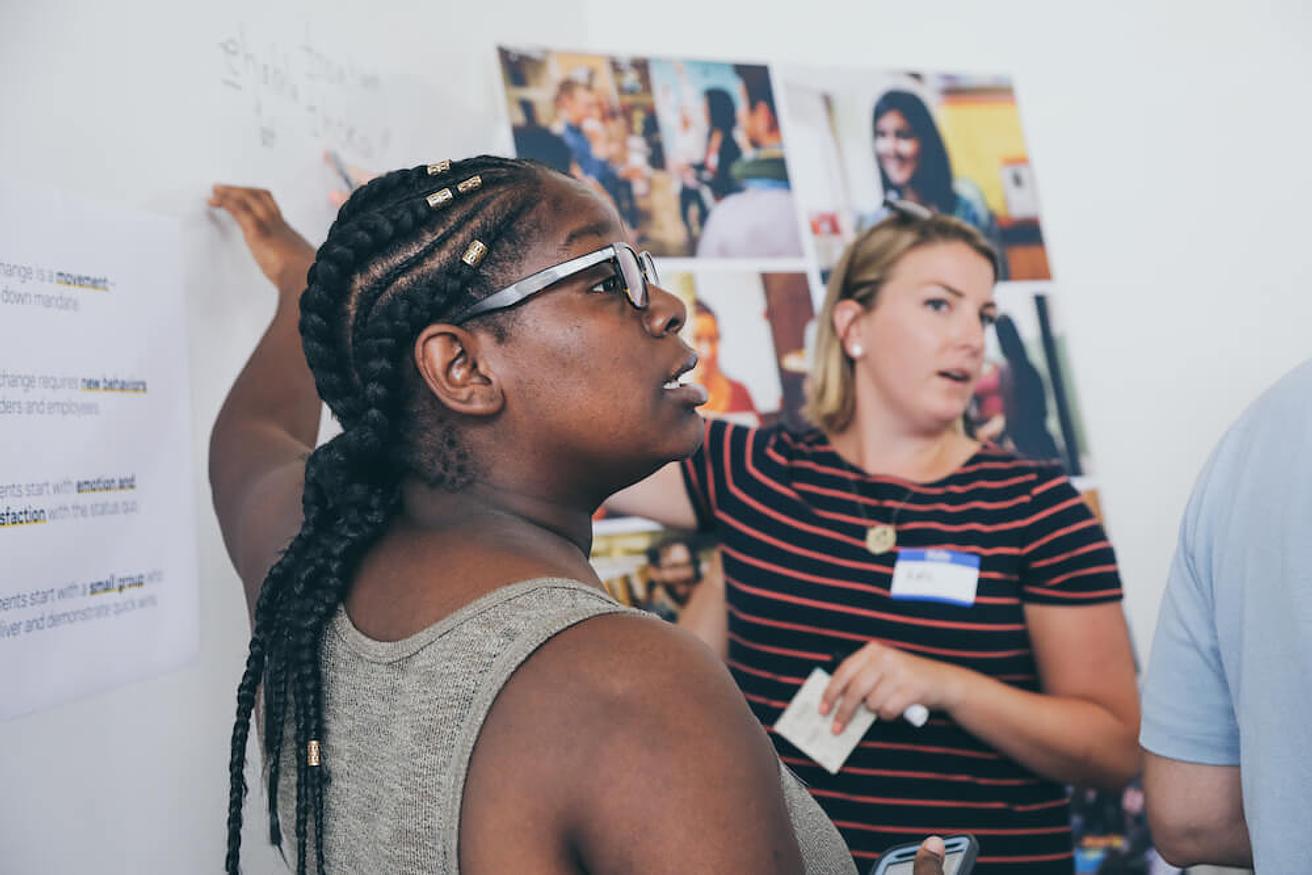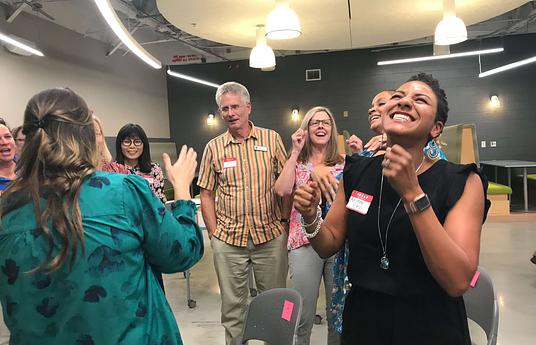Molly McMahon, Director at the Teachers Guild shares how they are catalyzing teachers’ creative leadership to prepare students to be the problem-solvers of tomorrow. This article is reposted, with permission, from our friends at BRIGHT Magazine, an online magazine focused on fresh storytelling about health, education, and social impact.
“It’s amazing I get to teach during this tumultuous time,” says Karen Heil, a middle school teacher in the Bronx borough of New York City. “As teachers, we influence young minds that will go out into the world. It’s an opportunity to impart wisdom and hope, so that they can make a difference in the world.” Though overwhelmed by current social and political events dividing the United States, Heil is focused on being a role model for her students.
To help better understand why her students were not learning well, Karen went to her students and asked them about their days. Many shared that school felt boring, stuck in the daily rut: class, homework, repeat. Armed with this insight and a mission to bring more joy to the classroom, Karen prototyped a new “project-based learning” approach that combined the arts with science. “I wanted students to be excited while learning about rocks and minerals,” she says.
Heil is a member of The Teachers Guild, a nonprofit initiative that uses design thinking principles to strengthen school communities. The Guild has over 10,000 teacher members across all 50 states. Design thinking, which in this case involves asking questions, understanding the needs of students, and collaborating with them, helps teachers begin to address and solve some of the biggest problems facing students and their communities.
Most importantly, design thinking builds “Collective Teacher Efficacy” (CTE), the belief within teachers that they have the power to enact change. If educators believe they can make a positive difference, then they likely will. Research shows that CTE is the number one factor driving positive student outcomes.
For Heil, the act of making learning joyful for her students, and instilling confidence in them, was a crucial first step. One way to do this, she decided, was to get her students to create illustrated comics featuring a particular mineral as a hero, and endowed each one with a superpower based on the rock’s unique properties. Characters like Zinc Possible and Miss Magnet appeared throughout the comic book collection, which the class titled, “Adventures in Mineral City.” In one part of the story, Diamond Doom busts his friends out of jail by smashing through the cell bars, which is possible because he’s made of such hard, durable material.
The middle schoolers also dressed up as their chosen mineral and created trading cards featuring the rock and its properties. One girl wore a sparkly green boa to represent emerald. “The kids loved autographing their trading cards and sharing them with each other,” says Heil. Younger grades even visited Heil’s class to learn from her students, who explained the minerals through their comics, costumes, and cards.
“They not only learned about geology, but they learned about themselves,” says Karen. “I saw them develop confidence and put themselves out there.”

For other teachers, design thinking helped them prototype solutions to address social issues such as marginalization experienced by many students of color. At a high school in Round Rock, Texas, students of color experience disproportionate disciplinary action: 24 percent of the student population is African-American and Latinx, yet they represent 50 percent of disciplined students.
Digging deeper into this troubling statistic, Tiffanie Harrison, a marketing teacher and Teachers Guild member, noticed these students were getting into trouble for things like skipping class and disrespecting teachers, indicating a lack of connection to the classroom. Harrison designed a school-wide equity audit along with a group of students to address this issue. “My role was to [include] students in the design process by first helping them ask questions and use empathy to understand [their] stories,” she says.
The group discovered that the marginalized students were rarely asked about their experiences by administrators, teachers, and fellow students. As a result, they felt invisible and disconnected from the community. “It’s hard to convince someone who doesn’t experience the problem that it’s a problem,” says Harrison. She supported the students in designing experiments to elevate the unheard voices among the student body and foster opportunities for understanding and connection.
For example, during Black History Month, students created posters of modern African American heroes for teachers to hang in their classrooms. They organized panels and discussion groups for the larger school community to share stories and listen to different perspectives. Students even attended school board meetings to share their personal experiences with disproportionate discipline. “I was surprised by how prepared the students were in each instance,” says Harrison. “They were waiting for this moment, but had never had it.”

This series of experiments resulted in the creation of the school’s first black student union, a student-run organization devoted to discussing and advancing issues of diversity, equity, and inclusion. Harrison and the students created spaces where people can be heard and seen. “When you build understanding and relationships, you can do more,” she says. Educators, administrators, and parents now demonstrate greater empathy for the student experience, and the model has spread to four other schools in the area.
Harrison admits that she’s still uncomfortable thinking of herself as a civic leader, though she steps into this role every day as a teacher. After all, a nation’s future is built in schools and classrooms with teachers as civic leaders. Harrison believes that equipping teachers with design-thinking is a way to give them permission and agency to lead. “Design is the most effective way to empower teachers and students to address the goals for society,” she says. “It’s my job to teach my students to be responsible citizens. It’s a high and necessary calling.”
Schools are one of the first places children gather in the community. Teachers are often the first voice of reason students encounter to help them navigate issues like discrimination, climate change, and violence. For Keishia Blake, another educator in the Bronx, her job goes beyond just teaching children math and English. She says,
To know more about the Teachers Guild, explore their innovation page.

